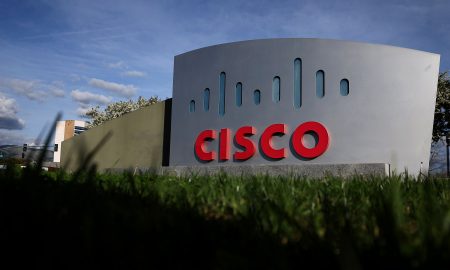
What Is Wholesale Price and Why Is It Important in Retail Business?

What is wholesale price? Understanding wholesale prices is essential for the retail industry’s backbone. This concept, central to large and small retail business operations, plays a pivotal role in shaping pricing strategies and, ultimately, profit margins. This article will explore everything you need to know about wholesale prices.
What Is Wholesale Price?
Wholesale price refers to the cost at which retail businesses acquire goods in bulk from distributors or manufacturers. This price is devoid of any retail markup, which is the additional charge a retailer adds to cover various other costs and achieve profit.

Tima Miroshnichenko | Pexels | Wholesale price refers to the cost at which retail businesses acquire goods in bulk from distributors or manufacturers.
Essentially, it’s the base price before products hit the shelves and find their way into consumer’s hands at a higher retail price. This lower price point reflects the lack of marketing, packaging, and direct sales costs that retailers usually bear.
For a retailer, understanding the wholesale price is like having the key to a map that leads to competitive pricing and effective stock management. It’s the first number on a calculator that will determine how much room there is for competitive retail pricing, which can sway consumers to buy without compromising on profit margins.
Importance of Wholesale Price in Retail Business
Why does this figure matter so much? It’s simple: the wholesale price directly impacts how much profit a store can make on each item sold. Retailers buy products at this lower price and sell them to their customers at a mark-up, known as the retail price. The difference between these two figures is crucial—it’s where the retailer makes their money.

Jack Sparrow | Pexels | The wholesale price directly impacts how much profit a store can make on each item sold.
But it’s more than just a number; it’s a strategic cornerstone for retail decision-making. Wholesale price influences everything from determining how much stock to order to setting competitive price points that attract customers without slashing profits. Retailers with a keen grasp on their purchasing costs can maneuver through market fluctuations with agility, maintaining healthy profit margins even when economic conditions are tough.
The Key Factors Influencing Wholesale Prices
Understanding what influences wholesale price is just as important as knowing the price itself. Several dynamic factors can cause wholesale costs to fluctuate, which in turn affects retail pricing and stock decisions:
- Production Costs: The more it costs to make a product, the higher the wholesale price. This can be due to raw material costs, labor, or technological inputs.
- Market Demand: High demand for a product can lead to higher wholesale prices as suppliers take advantage of the market situation. Conversely, when demand wanes, prices may drop to encourage purchases.
- Competition: The more saturated a market, the more competitive the wholesale pricing. Suppliers might lower prices to attract more retailers in a competitive market.
- Global Economic Factors: Everything from currency exchange rates to international trade agreements can affect wholesale pricing. These global shifts can cause prices to fluctuate unexpectedly, which requires retailers to stay informed and adaptable.

drobotdean | Freepik | The wholesale price is what the retailer pays, the retail price is what the consumer pays.
Comparison between Wholesale and Retail Price
While the wholesale price is what the retailer pays, the retail price is what the consumer pays. This distinction is crucial as it highlights the journey of product pricing from initial cost to final sale. Wholesale prices are generally lower because they involve bulk purchases directly from suppliers without the additional costs of retail operations. In contrast, retail prices include these additional costs plus a profit margin, compensating for the direct sale to customers.
Retail prices are also more volatile than wholesale prices. They can change based on local demand, marketing strategies, and competitive actions within the retail market. Retailers need to carefully balance these prices to remain competitive without eroding their profit margins.
More inTrade & Markets
-
How to Make Money on TikTok – 8 Proven Strategies
TikTok isn’t just a platform for viral dance challenges and funny skits anymore. It’s a goldmine of opportunity for creative minds...
June 6, 2024 -
Tech Giant Cisco Likely to Lay Off ‘Almost 350’ Employees As Part of Its ‘Restructuring Plan’
Is your favorite tech company feeling the pinch? Recent reports suggest that Cisco (CSCO) is planning to lay off ‘almost 350...
May 31, 2024 -
How Many Mortgages Can You Have? Understanding the Limits
Are you pondering the idea of delving into the realm of multiple mortgages? Whether it’s for expanding your property portfolio, securing...
May 23, 2024 -
What You Ought to Know About Dominican Republic Rum
When you think of the Dominican Republic, your mind might drift to images of beautiful beaches and vibrant dance rhythms. But...
May 16, 2024 -
Are Mobile Homes Worth Investing? A Deeper Look
Are mobile homes a good investment? This question often pops up among potential homeowners and investors alike, looking for an affordable...
May 9, 2024 -
10 Best Stocks to Invest in 2024 for Smart Investors
In a world where economic growth seems to be hitting the brakes, the hunt for the best stocks to invest in...
April 30, 2024 -
Will Breaking a Lease Affect Your Credit? The Real Impact
Breaking a lease isn’t just about packing up and moving on; it’s a decision that can have lasting financial implications. While...
April 23, 2024 -
Is Traveling a Hobby? Exploring the Reasons and Ways to Travel More
Have you ever scrolled through social media and stumbled upon the question, “Is traveling a hobby?” It’s a thought-provoking query that...
April 16, 2024 -
Who Owns the Playboy Mansion? Revealing the Current Owner
The story of the Playboy Mansion is as intriguing as the parties it once hosted. Nestled in the heart of Los...
April 9, 2024















You must be logged in to post a comment Login